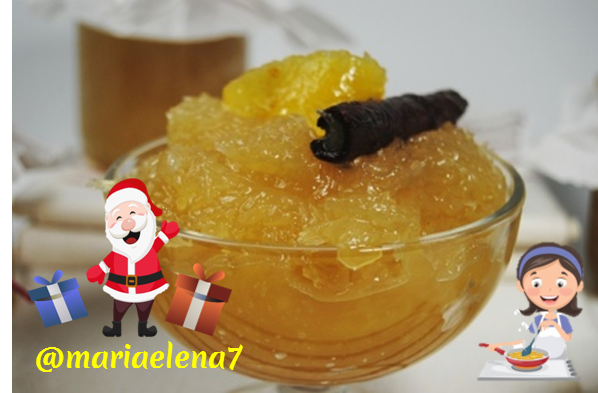

El Cabello de Ángel, un ingrediente único para hacer dulces o bien rellenar pasteles, tartas y todos aquellos postres de repostería que te puedas imaginar. También conocida como calabaza confitera, cidra, alcayote… es una tipo de calabaza que se utiliza principalmente para elaborar el dulce o mermelada de cabello de ángel ( muy utilizado en repostería como relleno de hojaldres, ensaimadas, bizcochos, incluso roscones de reyes).
Todos los amantes del dulce habrán probado alguna vez el cabello de ángel, una elaboración hecha a base de fibras caramelizadas de la pulpa de algunas frutas, todas ellas pertenecientes a la familia de las cucurbitáceas como, por ejemplo, el pepino, la calabaza, el melón, la sandía o los calabacines, entre otras especies desconocidas en nuestro país. Tal es su popularidad dentro de la repostería tradicional que multitud de recetas la incluyen como parte de su composición, dándoles a cambio un toque muy especial.
Quote Angel Hair, a unique ingredient to make sweets or to fill cakes, cakes and all those pastry desserts that you can imagine. Also known as pumpkin confectionery, citron, alcayote ... it is a type of pumpkin that is used mainly to make sweet or angel hair jam (widely used in pastries as a filling for puff pastry, ensaimadas, cakes, even roscones de reyes).
Quote All lovers of sweet will have ever tried angel hair, a preparation made from caramelized fibers from the pulp of some fruits, all of them belonging to the cucurbit family such as cucumber, pumpkin, melon, watermelon or zucchini, among other unknown species in our country. Such is its popularity within traditional confectionery that many recipes include it as part of its composition, giving it a very special touch in return.
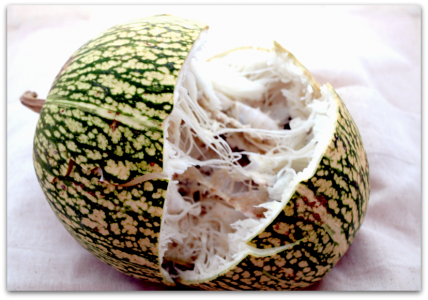
La calabaza confitera destaca por su alto contenido en fibra, este vegetal también una buena fuente de antioxidantes como la vitamina C y los carotenos, aunque al estar elaborada como confitura tiene gran cantidad de azúcar.
En este post explico cómo lo he hecho con un detallado “paso a paso”. La verdad es que no tiene demasiado complicado si has preparado mermeladas caseras,
Lo cierto es que solo requiere la cocción de la pulpa en una solución de azúcar muy concentrada hasta que se creen una especie de hilos de color dorado.
Quote The confectionery pumpkin stands out for its high fiber content, this vegetable is also a good source of antioxidants such as vitamin C and carotenes, although being made as jam it has a large amount of sugar.
In this post I explain how I have done it with a detailed "step by step". The truth is that it is not too complicated if you have prepared homemade jams,
The truth is that it only requires cooking the pulp in a highly concentrated sugar solution until a kind of golden colored threads are created
Los Ingredientes
- Calabaza confitera (cidra)
- Azúcar
- Piel de limón
- Palo de canela
Quote Confectionery squash (citron)
Sugar
Lemon peel
Cinnamon stick
 Preparación
Preparación

- En primer lugar, procederemos a lavar muy bien la calabaza entera, bajo el chorro del grifo, para quitarle toda la tierra que pueda tener. Seguidamente cortamos la calabaza en trozos grandes. Para cortarla (tiene muy dura la corteza) habrá que tener cuidado con los cuchillos, ya que nos podemos cortar.
Quote In the first place, we will proceed to wash the whole pumpkin very well, under the tap, to remove all the dirt it may have. Next we cut the pumpkin into large pieces. To cut it (the crust is very hard) you will have to be careful with the knives, since we can cut ourselves.
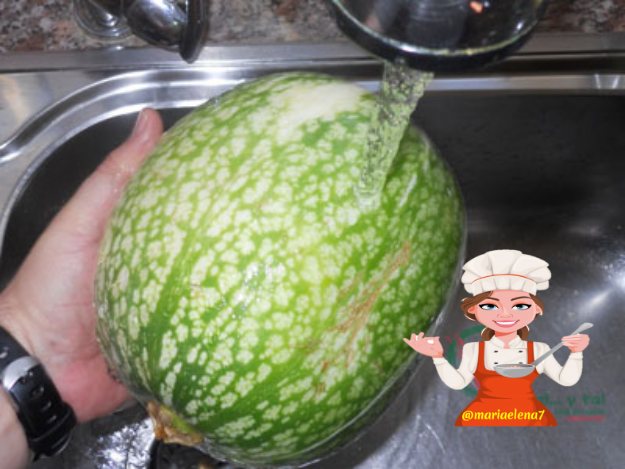
- En una olla grande, se meten los trozos de calabaza, se cubren de agua y se pone al fuego hasta que llega al punto de ebullición. Se baja el fuego y se mantiene en un hervor suave durante unos 20 minutos (hasta que veamos que la pulpa está blanda).
Quote In a large pot, put the pieces of pumpkin, cover with water and put on the fire until it reaches the boiling point. The heat is lowered and it is kept in a gentle boil for about 20 minutes (until we see that the pulp is soft).

- Pasado este tiempo, su pulpa estará tierna y la podremos separar bien de la piel. Primero dejaremos que se enfríe y cuando ya no queme iremos separando la piel de la pulpa y quitando todas las pepitas. Una vez que tenemos todas las hebras de cabello de ángel, se dejan escurrir un rato (o toda la noche) para que suelten la mayor cantidad posible de líquido. Por cierto, no tiramos el líquido que va escurriendo, ya que probablemente lo utilizaremos cuando vayamos a cocer el cabello de ángel con el azúcar.
Quote After this time, its pulp will be tender and we can separate it well from the skin. First we will let it cool down and when it is no longer burning we will separate the skin from the pulp and remove all the seeds. Once we have all the strands of angel hair, they are allowed to drain for a while (or overnight) so that they release as much liquid as possible. By the way, we do not throw away the liquid that is draining, since we will probably use it when we are going to cook the angel hair with the sugar.
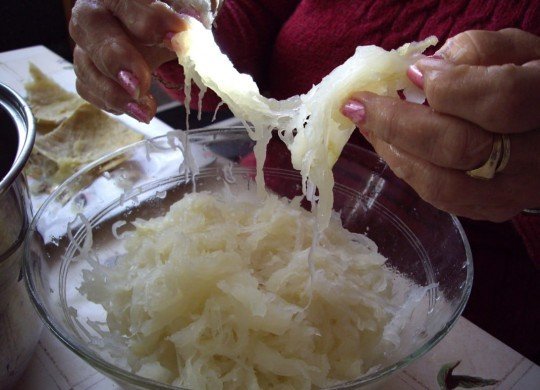
- Pesamos la pulpa de cabello de ángel y pesamos la mitad de azúcar que de pulpa, lo juntamos en una olla, añadimos la corteza de limón y la rama de canela y ponemos a cocer el conjunto durante 1 ½ aprox. Movemos continuamente la preparación para que no se pegue. Si es necesario (si vemos que se está secando) le añadimos líquido de la cocción. No se puede decir la cantidad exacta de líquido, ya que dependerá de varios factores, como lo escurrido que tengamos la pulpa, de la intensidad del fuego según vayamos viendo.
Quote We weigh the angel hair pulp and weigh half the sugar that the pulp, we put it together in a pot, add the lemon rind and the cinnamon stick and cook the whole for about 1 ½. We continuously move the preparation so that it does not stick. If necessary (if we see that it is drying) we add cooking liquid. The exact amount of liquid cannot be said, since it will depend on several factors, such as how drained the pulp is, the intensity of the fire as we see it
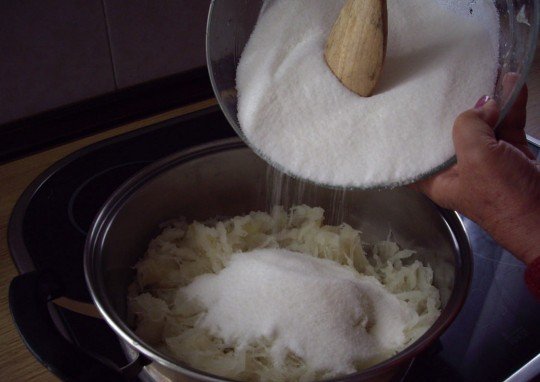
- Ponemos la cazuela a fuego bajo-medio y removemos de vez en cuando, hasta que se caramelice la pulpa de la cidra, más o menos media hora aproximadamente. Depende la cantidad de pulpa que uses. Vale resaltar que ha a medida que va pasando el tiempo, vemos cómo cambia de color, que va cogiendo un ligero tono dorado, ése es el punto para dejar de cocerlo.
Quote We put the casserole over low-medium heat and stir from time to time, until the pulp of the citron is caramelized, about half an hour. It depends on the amount of pulp you use. It is worth noting that as time goes by, we see how it changes color, that it takes on a slight golden tone, that is the point to stop cooking it.
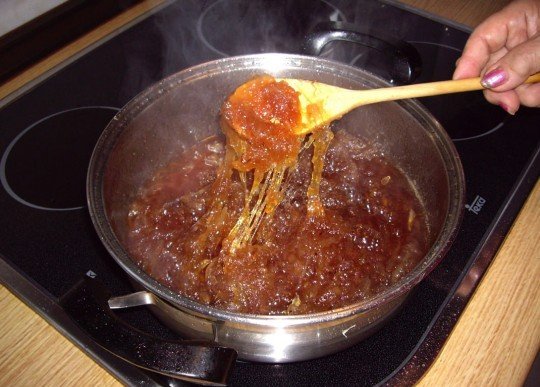
- Una vez cocido el cabello de ángel y estando aún caliente le añadiremos la ralladura del limón y la canela en polvo al gusto mezclamos bien todos los ingredientes. De desear con un tenedor ir separando los hilos para que no queden apelmazados. Y ya podemos empezar a envasarlo en tarros limpios y que cierren herméticamente.
Quote Once the angel hair is cooked and while it is still hot we will add the lemon zest and the cinnamon powder to taste, mix all the ingredients well. If desired, use a fork to separate the threads so that they are not caked. And we can start to pack it in clean jars that close hermetically.
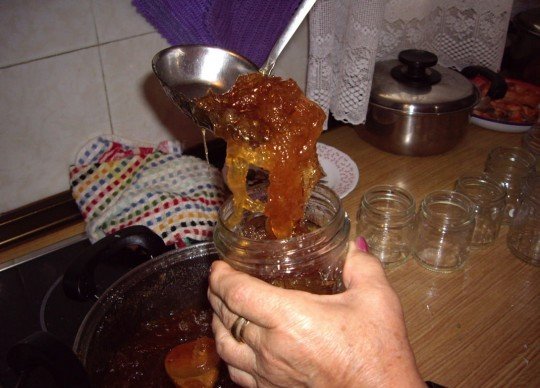
- Cuando tengamos todos los tarros llenos y cerrados los pondremos en una olla al baño María, con el agua fría y sin que los cubra. Después de que el agua empiece a hervir, los dejaremos durante 20 minutos en ebullición antes de apagar el fuego.
Quote When we have all the jars full and closed, we will put them in a pot in a double boiler, with cold water and without covering them. After the water starts to boil, we will boil them for 20 minutes before turning off the heat.
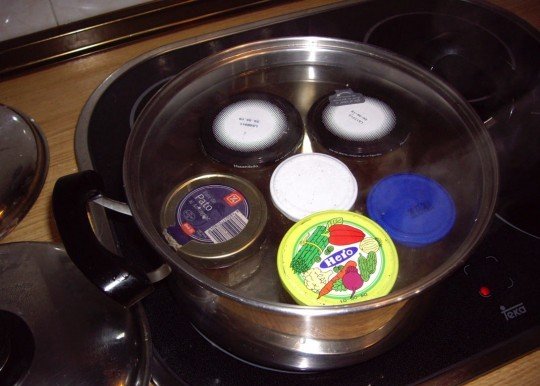
- Esperaremos a que los tarros se enfríen, los sacamos del agua y ya tenemos nuestro cabello de ángel listo para comer.
Quote We will wait for the jars to cool, we remove them from the water and we have our angel hair ready to eat
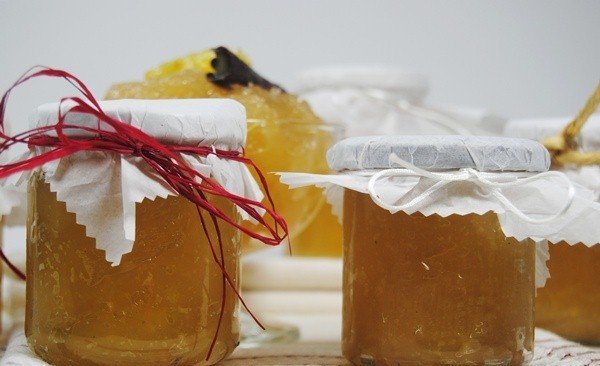


Muchas gracias por acompañarme, estoy segura de que a ustedes también les encanta este platillo. Gracias por leer este material
Quote Thank you very much for joining me, I am sure that you also love this dish. Thanks for reading this material
@mariaelena7 #spanish #appreciator #cervantes #comida #life #foodie #recipe #HiveVenezuela #curangel

Source 1
Source 2
Source 3
Source 4
Source of photos
Plagiarism is the copying & pasting of others' work without giving credit to the original author or artist. Plagiarized posts are considered fraud and violate the intellectual property rights of the original creator.
Fraud is discouraged by the community and may result in the account being Blacklisted.
If you believe this comment is in error, please contact us in #appeals in Discord.